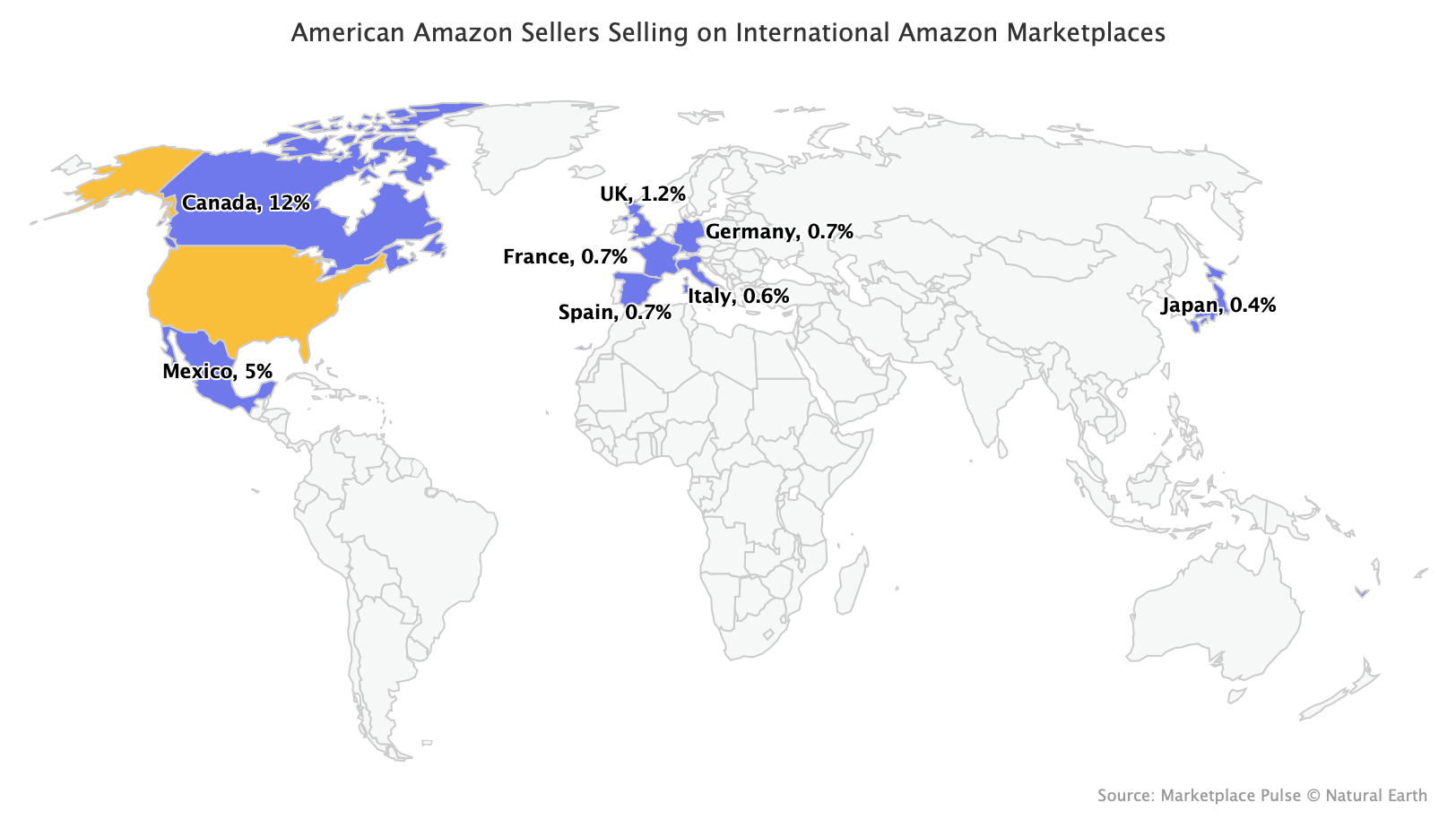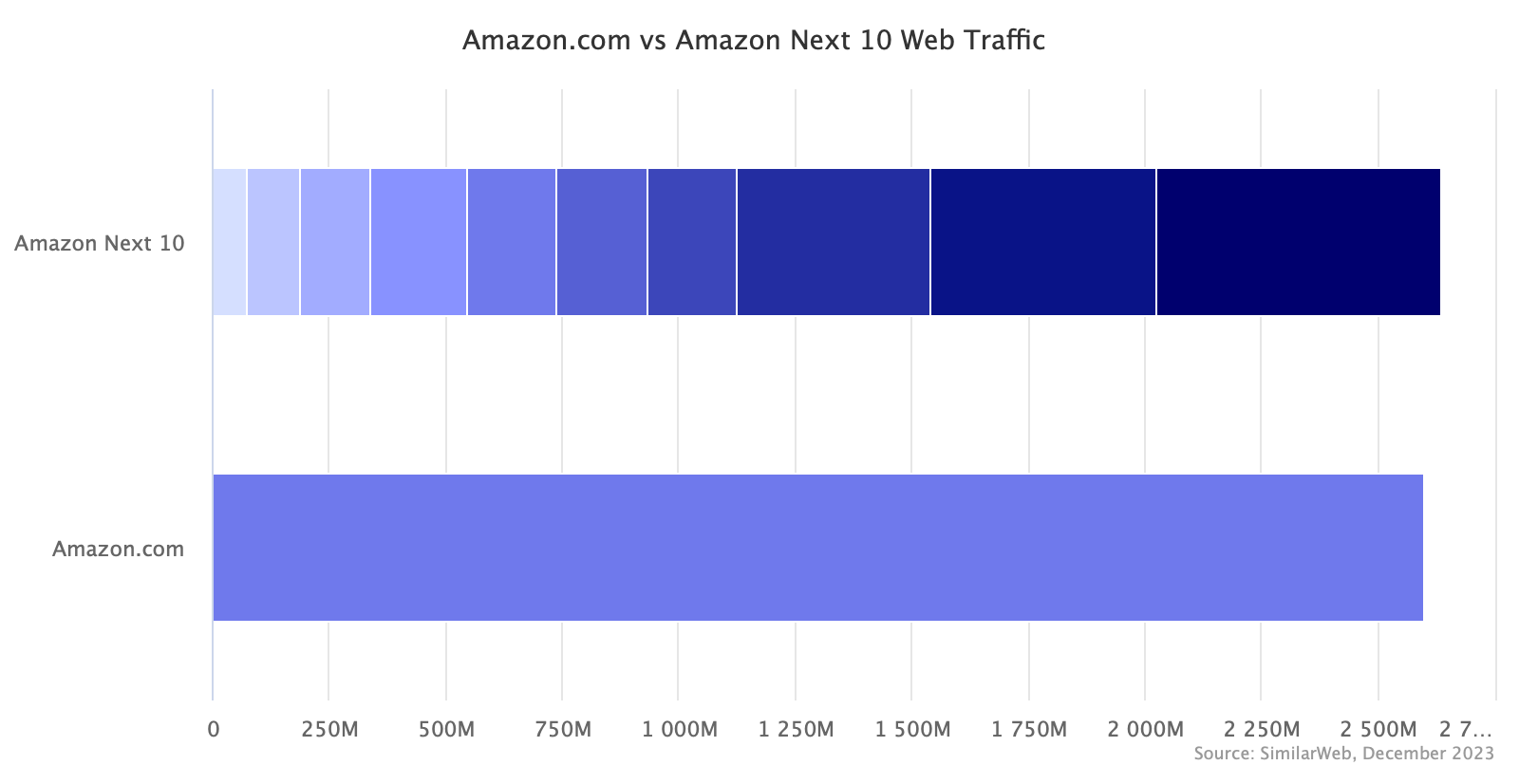Most American Amazon sellers stick to selling in the U.S. Despite Amazon’s attempts to foster cross-border e-commerce, less than 1% sell outside the continent.
According to Marketplace Pulse research, 12% of U.S. sellers sell on Amazon Canada, and 5% sell on Amazon Mexico. Many use the Remote Fulfillment with FBA service, which lets sellers sell to customers in Canada, Mexico, and Brazil without sending inventory to those countries. Due to its proximity to the U.S., Canada has more successful sellers from the U.S. than Canada.
Amazon’s biggest international marketplaces are in Japan, Germany, and the U.K., each multiple times larger than Canada or Mexico. Yet just a few thousand U.S. sellers sell there and on other European marketplaces — less than 1% of the total. More sellers from Japan and the U.K. sell in the U.S. than vice versa. There is little overlap between Amazon in Europe and the U.S.: European sellers represent a small percentage of the U.S. volume, and few U.S. sellers are booming in Europe.

Amazon sellers are set up to be international because they rarely source goods domestically. Selling in multiple continents is thus a matter of splitting imports into multiple containers set for different destinations rather than importing to one first and then shipping out again. Because Fulfillment by Amazon (FBA) handles fulfillment, sellers are rarely required to have a physical presence anywhere, unlike if they were expanding brick-and-mortar stores.
Amazon’s European marketplaces, plus the U.K., Japan, Mexico, Brazil, and Canada combined, are as big as Amazon in the U.S. And Amazon is #1 in many of them. While managing sales across multiple continents presents unique challenges, international is a massive opportunity.

The only caveat is that Amazon’s smaller marketplaces could be more competitive despite having fewer sellers. In other words, a smaller set of sellers is sharing an even smaller number of shoppers. According to Marketplace Pulse research, each active seller’s share of traffic on Amazon in the U.S. is greater than on Amazon’s other marketplaces. For example, in the U.K., sellers receive half the traffic.
Amazon’s pitch is that its twenty-two marketplaces are virtually a single market, managed through one familiar dashboard with many building blocks like fulfillment, advertising and listing management shared (international trade complexities aside). However, in reality, there is little cross-border trading beyond continental borders. European businesses are sticking with Europe, Japanese companies are selling in Japan, and U.S. sellers are staying in North America.

